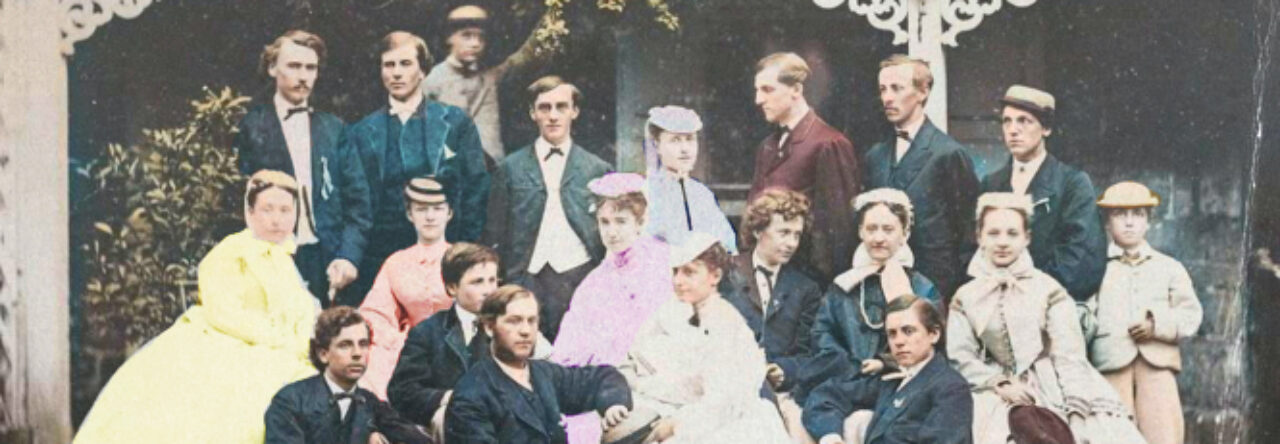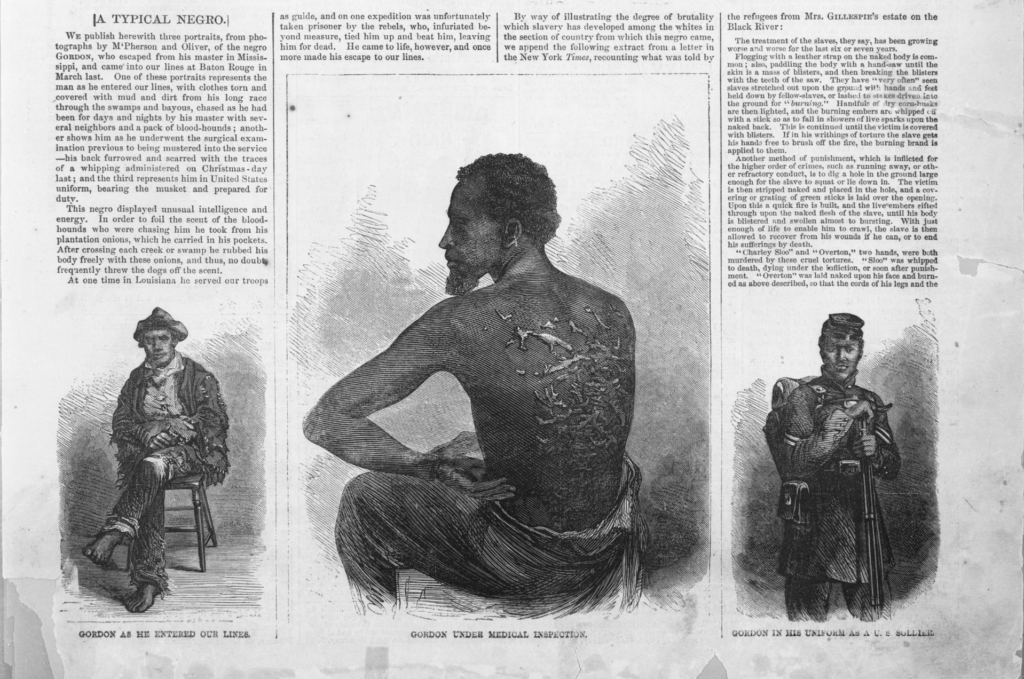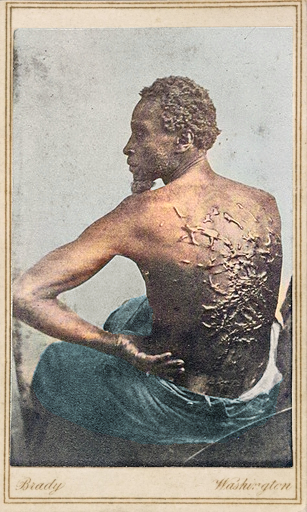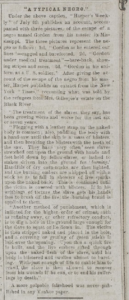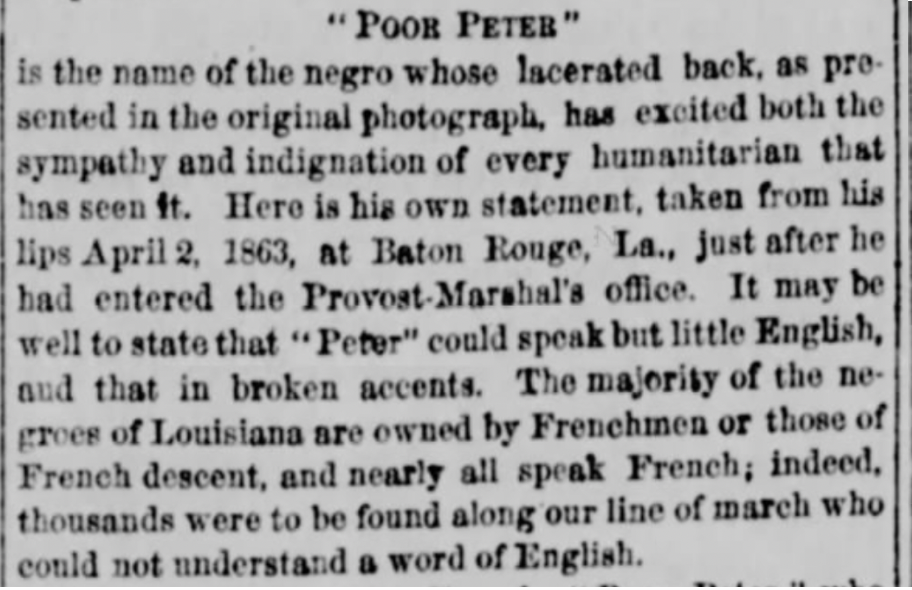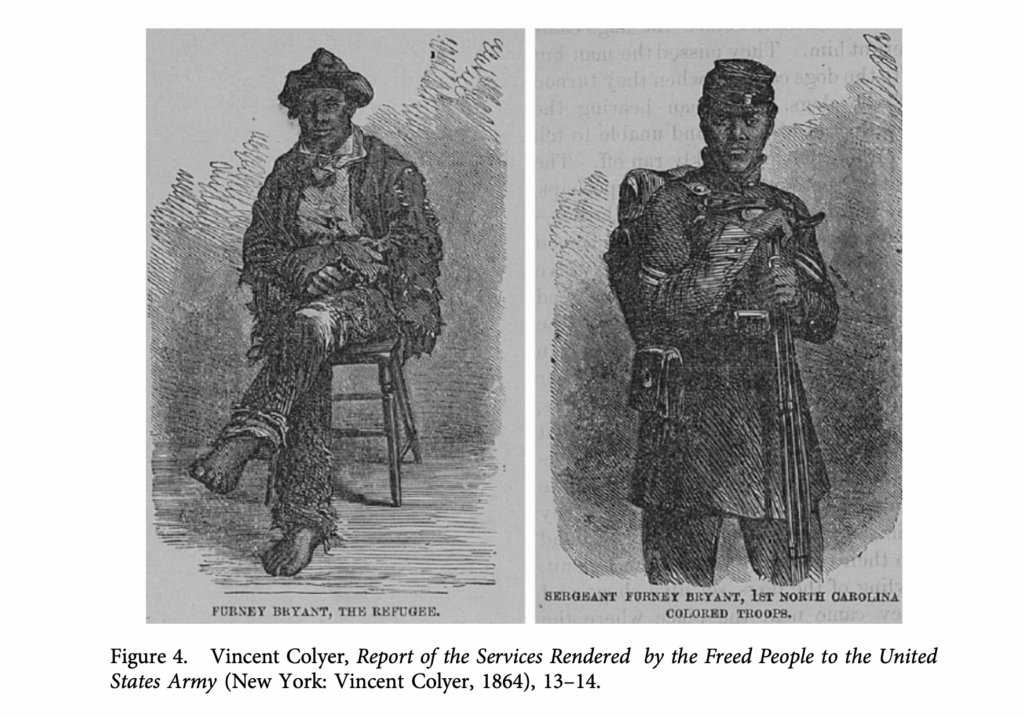Newspapers can be fantastic starting places, the lowest-hanging fruit of historical research. –Zachary Schrag, Princeton Guide, p. 130
Check out the library’s History subject guide to newspaper databases
Discussion Questions
- Schrag encourages aggressive research in historical newspapers, but he also provides some cautionary advice about how to proceed. What are his most valuable tips?
- What’s missing from the library’s online newspaper guide? How could we help improve it? What do you really need to know when researching historical newspapers?
Schrag’s Checklist of Primary Sources (chaps. 6-7)
- First-person accounts
- Diaries
- Letters
- Memoirs
- Interviews
- Workaday documents
- Periodicals
- Newspapers
- Magazines
- Specialized Periodicals
- Government Documents
- Criminal Investigations and Trials
- Censuses
- Official Reports
- Letters and Petitions
- Institutional Records
- Scholarship
- Fiction
- Words
- Big Data
- Numbers
- Maps
- Images
- Portraits
- Motion Pictures and Recordings
- Artifacts
- Buildings and Plans
- Places
Case study: Journal of Christopher Columbus
The American Yawp features an excerpt from Christopher Columbus’ 1492 diario or journal but it doesn’t quite tell the whole story behind this complicated primary source. Here is what the Yawp editors note before sharing excerpts from October 1492:
First encounters between Europeans and Native Americans were dramatic events. In this account we see the assumptions and intentions of Christopher Columbus, as he immediately began assessing the potential of these people to serve European economic interests. He also predicted easy success for missionaries seeking to convert these people to Christianity.
But what that information leaves out is that the fate of the Columbus journal as it “survived” over the centuries. The original (written in Latin) is missing. What remains is a paraphrase and partial copy prepared by Spanish priest (and Indigenous advocate) Bartoleme de Las Casas about forty years after the 1492 voyage. That version also disappeared for a time, “recovered” somewhat mysteriously in the late eighteenth century. Scholars have debated the authenticity of this discovery but most now accept the Las Casas version as the basis for a legitimate reproduction of what Columbus originally wrote. The material presented in the Yawp appendix comes from an 1893 English translation of the recovered Las Casas document.
Thursday, October 11
…Presently many inhabitants of the island assembled. What follows is in the actual words of the Admiral in his book of the first navigation and discovery of the Indies. “I,” he says, ” that we might form great friendship, for I knew that they were a people who could be more easily freed and converted to our holy faith by love than by force, gave to some of them red caps, and glass beads to put round their necks, and many other things of little value, which gave them great pleasure, and made them so much our friends that it was a marvel to see.
They afterwards came to the ship’s boats where we were, swimming and bringing us parrots, cotton threads in skeins, darts, and many other things; and we exchanged them for other things that we gave them, such as glass beads and small bells. In fine, they took all, and gave what they had with good will. It appeared to me to be a race of people very poor in everything. They go as naked as when their mothers bore them, and so do the women, although I did not see more than one young girl.
All I saw were youths, none more than thirty years of age. They are very well made, with very handsome bodies, and very good countenances. Their hair is short and coarse, almost like the hairs of a horse’s tail. They wear the hairs brought down to the eyebrows, except a few locks behind, which they wear long and never cut. They paint themselves black, and they are the color of the Canarians, neither black nor white. Some paint themselves white, others red, and others of what color they find. Some paint their faces, others the whole body, some only round the eyes, others only on the nose.
They neither carry nor know anything of arms, for I showed them swords, and they took them by the blade and cut themselves through ignorance. They have no iron, their darts being wands without iron, some of them having a fish’s tooth at the end, and others being pointed in various ways. They are all of fair stature and size, with good laces, and well made. I saw some with marks of wounds on their bodies, and I made signs to ask what it was, and they gave me to understand that people from other adjacent islands came with the intention of seizing them, and that they defended themselves. I believed, and still believe, that they come here from the mainland to take them prisoners.
They should be good servants and intelligent, for I observed that they quickly took in what was said to them, and I believe that they would easily be made Christians, as it appeared to me that they had no religion, our Lord being pleased, will take hence, at the time of my departure, six natives for your Highnesses that they may learn to speak. I saw no beast of any kind except parrots, on this island.” The above is in the words of the admiral….
Case study: The Scourged Back
Photographic sources for Harper’s illustrations, taken behind Union lines in Louisiana, April 1863 (Library of Congress)
“Scourged Back” by William D. McPherson, Baton Rouge, 1863, colorized in 2023 using artificial intelligence (AI) programs
The Independent from New York, an antislavery periodical, first described the “Scourged Back” photographs on May 28, 1863, in an article that urged the likeness to be distributed widely as a “card-photograph” or carte de visite (CDV; see Brady version on far right above). The new editor, Theodore Tilton, wrote:
“This card-photograph should be multiplied by the hundred thousand, and scattered over the States. It tells the story in a way that even Mrs. Stowe cannot approach; because it tells the story to the eye.
You can read a reprint of that original May 28th article in The Liberator, June 19, 1863, which had just the week before begun selling the “Scourged Back” CDVs for 15 cents per card. That same week, William Lloyd Garrison, Jr. also provided his own reaction to the “Scourged Back” in a piece for his father’s newspaper on June 12, 1863. The editor’s son quoted a letter from a white surgeon in a black union regiment (First Louisiana) reporting that he had seen “hundreds” of such scourged backs among his men and that the image was important, because, “It is a lecture in itself.”
Especially following the publication on the illustrations in Harpers in July 1863, Southern and some Northern Democratic newspapers denied the authenticity of the story behind the scourged back images. The Southern Illustrated News wrote on July 25, 1863: “A more palpable falsehood was never published in any Yankee newspaper.”
Under the headline, “Poor Peter,” the New York Tribune provided a fuller description of the background behind the infamy of the “scourged back” images, explaining that there were two different, French-speaking “contrabands,” Peter (whipped back) and Gordon (ragged clothes), not a single transformed runaway, who appeared behind Union lines near Baton Rouge. The description, including a translation of an interview with Peter, appeared in an article from December 3, 1863.
The best scholarly account of the “scourged back” image comes from David Silkenat, “‘A Typical Negro’: Gordon, Peter, Vincent Colyer, and the Story behind Slavery’s Most Famous Photograph,” American Nineteenth Century History 15 (2014): 169-86 (America: History & Life). Silkenat identifies the likely Harper’s illustrator and author of the “A Typical Negro” article as Vincent Colyer, showing how the artist and government agent re-used two of the images (the before & after illustrations) in a book about his experiences in North Carolina. In that volume, Colyer claimed the black soldier who had appeared in Union lines was a runaway named Furney Bryant. However, Silkenat doubts the veracity of this claim. He does seem more willing to accept the possibility that the December 1863 Tribune article distinguishing between “Peter” and “Gordon” was accurate, though even on this critical point, he lacks certainty.
“Emancipation” (2022)
